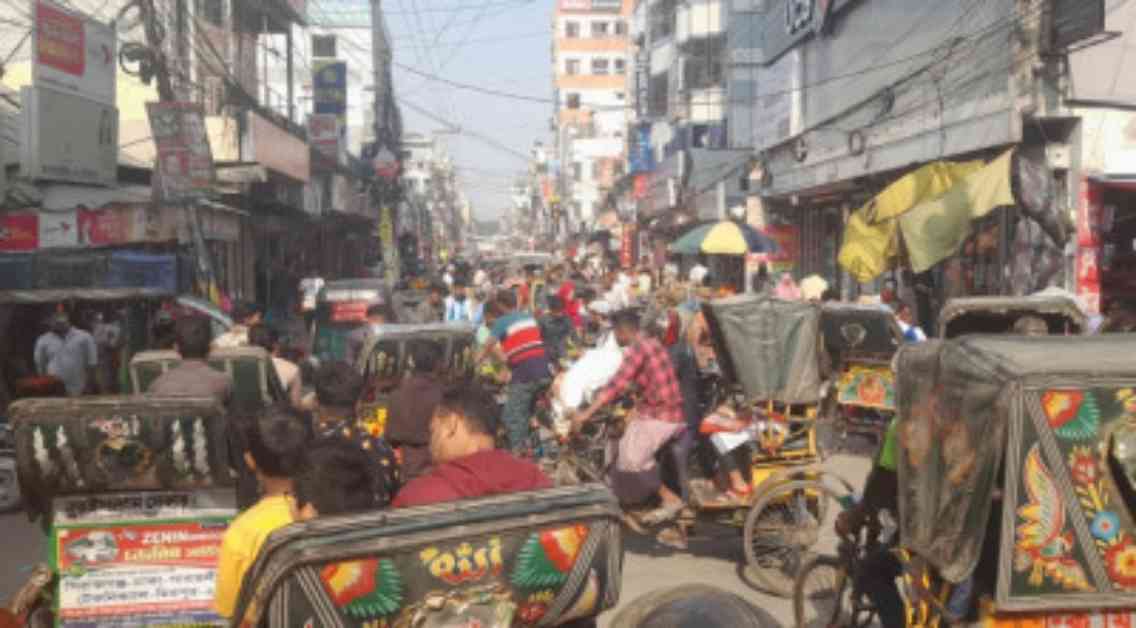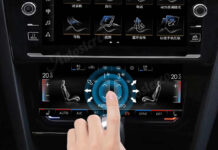Sirajganj: Embarking on a Rickshaw-Clad Journey
The city of Sirajganj, nestled along the banks of the Jamuna River, has transformed into a bustling hub of rickshaws, where car parking is a luxury, lawlessness prevails, and footpaths serve as makeshift storefronts amidst chaotic traffic scenarios. Venturing into the heart of the city reveals a relentless cycle of rickshaw congestion, particularly at pivotal intersections, escalating with the imminent approach of Eid-ul-Fitr.
Navigating through the city, the busiest locale emerges at Bazar Station Square, where vehicular mayhem ensues throughout the day. At the crucial juncture of seven roads, a cacophony of rickshaws, auto-rickshaws, buses, and trucks converge, often flouting traffic regulations and inadvertently inviting sporadic accidents.
The Perils of Traffic Anarchy
Furthermore, the city’s arterial roads such as Shaheed Sohorawardi Road, Siraji Road Mor, Boro Bazar, Padmapukur Mor on Mujib Sarak, Vashani College Mor, Khalifa Patti Mor, Chourasta Mor, New Dhaka Road’s Rail Gate, Chamra Patti, SB Fazlul Haque Road’s Goshala Muktijoddha Sangsad Lane, Rupali Furniture Mor, M.A. Matin Road’s Parveen Mor, Bus Stand Mor, and Kathirpur Road’s Katherpul area witness a daily ordeal of rickshaw gridlock, echoing the frustrations of the populace.
Residents, merchants, and commuters unanimously decry the lack of discipline within the city. In the central cityscape, multiple CNG-operated auto-rickshaw stands and battery-operated easy-bike stands inadvertently fuel vehicular chaos due to unruly passenger embarking and disembarking practices, further exacerbating congestion. The absence of traffic etiquette perpetuates a culture where road users exhibit impatience and disregard for rules, contributing to the city’s deteriorating traffic decorum.
Battling Anarchy: A Glimpse of Hope
Sirajganj Municipal Corporation’s Traffic Department and district Traffic Police acknowledge the disproportionate prevalence of auto-rickshaws and easy-bikes, necessitating corrective measures to restore order. Despite earnest efforts to enforce regulations, the challenge persists, as lawlessness prevails amidst the urban landscape.
Engaging with local stakeholders, including textile merchant Aminul from Belkuchi Upazila, underscores the shared sentiment of exasperation towards the prevailing disorder. His weekly visits to the city bemoan the inaccessibility caused by rickshaw gridlock at every intersection, a sentiment echoed by other commuters from Rayganj, Pangasi, and Daulatpur.
Additionally, rickshaw pullers like Aminul, Shahed Ali, Biplab, and Rafiqul Islam lament the encroachment of footpaths for commercial purposes, extending to storefronts and even main roads. The proliferation of large commercial establishments and the absence of designated parking garages compel vehicles to occupy road spaces, exacerbating the city’s commuting woes.
In a bid to address the traffic crisis, Sirajganj Traffic Police have deployed 33 personnel across six designated points to manage vehicular flow efficiently. Measures such as prohibiting heavy vehicular movement during the upcoming Eid festival and designating motorcycle parking spaces at key intersections aim to mitigate congestion and enhance road safety standards.
District Traffic Police Inspector Saiful Islam underscores the collaborative approach with transport operators and labor leaders to raise public awareness and address the burgeoning traffic chaos. Proactive initiatives, including road markings, pedestrian bridges, and strict enforcement of traffic regulations, are poised to transform Sirajganj into a model city with orderly traffic management.
The clock strikes 15:34 on March 14, 2025, signaling the unyielding efforts to curtail traffic anarchy in Sirajganj, a narrative that encapsulates the collective resolve to navigate towards a harmonious urban landscape.
























